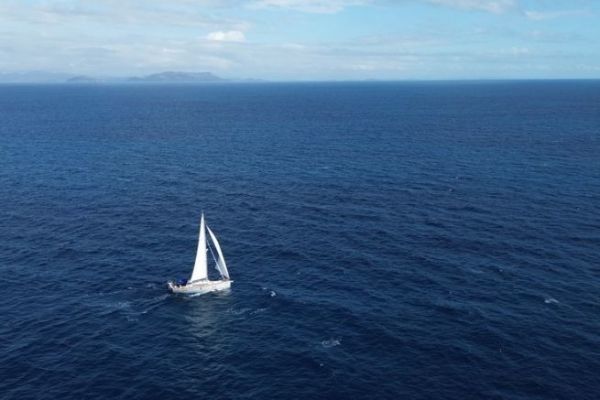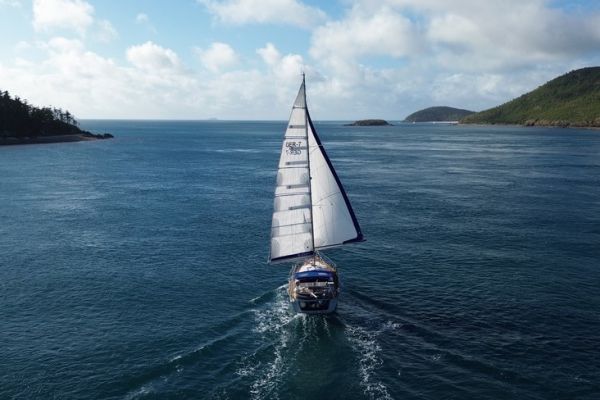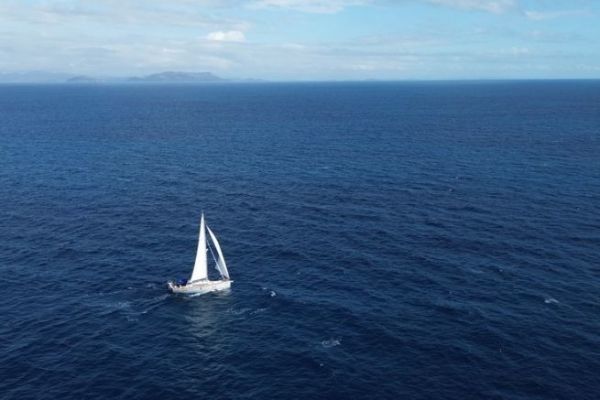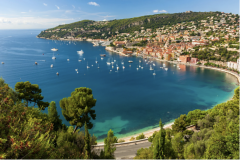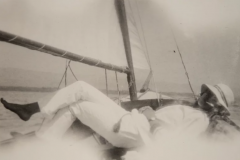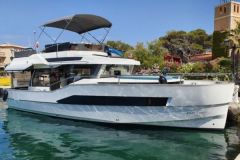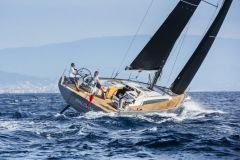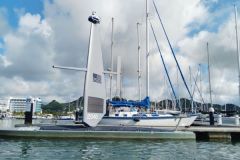In a previous article, we gave you tips on how to preparing your flight we strongly recommend that you follow these instructions before continuing.
Where can you launch your drone?
Flying a drone on a monohull is much more complicated than on a multihull or motorboat. Space is at a premium, and you'll need to find a suitable position: one with as few obstacles as possible.
We usually launch and land the drone on the stern of the boat, if there's a small space available. Taking off and landing on the stern is not trivial: if the maneuver goes wrong, you simply let go of the controls and the drone remains stationary, while your boat moves forward. This way, there's no risk of your drone hitting an obstacle, and all you have to do is repeat the maneuver.
Some people like to take off and land it from their bimini or on the solar panels at the stern. This is also possible, but we find it safer to have it take off directly in the hand.
Don't forget to find a place where you can hang on to avoid going overboard, as drone maneuvering is already epic enough.
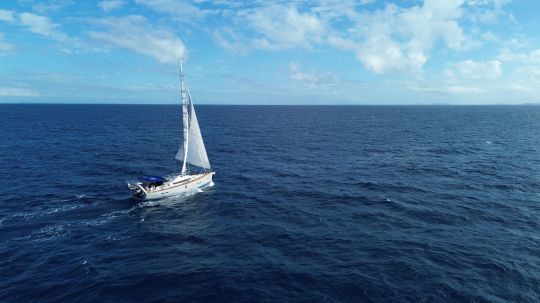
Training and preparing for sea flights
- Before flying your drone, be a good pilot on land and at anchor
- Make sure you know where you are on the map, as the drone is quickly lost from sight when navigating
- Keep at least 50% battery power for landing on your first flights, so that you can repeat the maneuver several times if necessary
- Get used to landing the drone "in reverse" to avoid confusion and reversing the controls
- Have a crew member ready to grab the drone by the hand while you fly
- The catcher must be equipped with protective gear and practice catching it with good dexterity. Your catcher is sure to save you from piloting errors more than once.
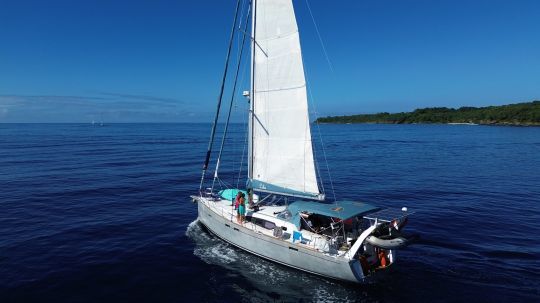
How to recover the drone
- When navigating, put your drone in "reverse", i.e. with the camera facing away from you
- Go at the same speed as your boat
- Stabilize it as much as possible and lower it to the right height so that your partner can grab it
- Bring it closer and grab it gently
- If you have any difficulty, let go of the controls, the boat will move forward and your drone will remain static
- Repeat the maneuver until you get it right
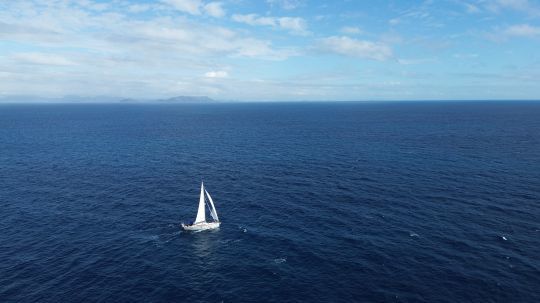
Normally, you'll have released a lot of adrenalin, but your drone will be back on board with the images in the box.
Good anticipation and a serious flight plan seem to be essential prerequisites for a controlled flight and for minimizing risks. But as a navigator, you already know the value of anticipation and preparation!
